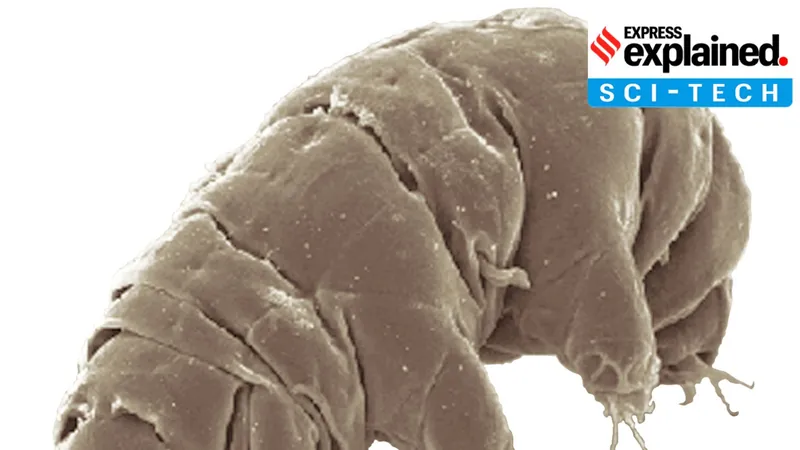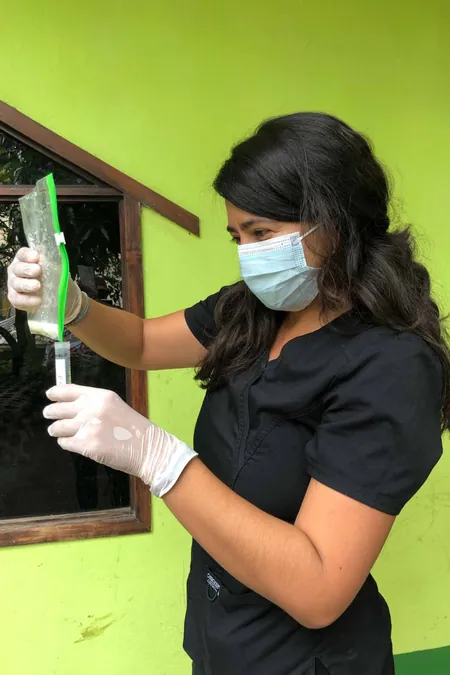
Unlocking the Secrets of Tardigrades: Earth’s Resilient ‘Water Bears’ Conquer Space
2025-06-10
Author: Nur
What Exactly are Tardigrades?
Tardigrades, affectionately dubbed 'water bears', are tiny aquatic marvels that have roamed the Earth for a staggering 600 million years—predating the dinosaurs by 400 million years! Resistant to the extinction events that wiped out countless species, these resilient creatures are poised to outlast humanity itself.
Measuring about 0.5 mm in length, tardigrades feature four pairs of legs, each equipped with 4 to 6 claws for maneuvering through their habitats. Their specialized mouth allows them to feast on plant cells, algae, and tiny invertebrates.
Commonly found in the delicate film of water on lichens and mosses, tardigrades earned the quirky nickname 'moss piglets' due to their habitat.
Why Study Tardigrades?
Though discovered in 1773, it’s only recently that scientists have turned their focused attention on these microscopic beasts. Tardigrades are incredibly resilient, surviving temperatures ranging from an ice-cold -273 degrees Celsius to a blistering 150 degrees Celsius. They can endure harsh ultraviolet radiation, immense pressures comparable to those found 4 kilometers beneath the ocean, and even emerge unscathed from a three-decade freeze, as reported by Front Line Genomics.
Unlocking the mysteries of tardigrades could have far-reaching applications, from engineering crops that can withstand harsh climates to developing innovative sunscreens and preserving life-saving human tissues.
The Science Behind Their Resilience
According to Siddharth Pandey, a research scientist at the Blue Marble Space Institute of Science, the tardigrades' superpower lies in a state known as cryptobiosis. During extreme conditions, they effectively short-circuit their metabolism and drop their water content by over 95%, entering an anhydrobiotic state that allows them to survive the most severe environments.
In this ‘tun’ state, these diminutive wonders thrive, thanks to unique proteins called cytoplasmic-abundant heat soluble (CAHS) proteins that form a protective gel-like matrix within their cells—safeguarding them against temperatures, radiation, and even the vacuum of space.
Voyager Tardigrades Experiment: What’s the Goal?
Upcoming missions will transport tardigrades to the International Space Station (ISS) in their tun state. Scientists plan to revive them and study how microgravity and cosmic radiation affect their biological functions. The main aim is to uncover the genes responsible for their unmatched resilience and DNA repair capabilities.
Insights gleaned from these studies could pave the way for developing strategies to protect astronauts during prolonged space missions while preserving biological tissues for potential deep-space travel.
Tardigrades: Space Pioneers!
Believe it or not, tardigrades have already voyaged into space! In 2007, around 3,000 moss piglets embarked on the European Space Agency’s Foton-M3 mission. Secured in their tiny round capsules, they were released into space and later rehydrated upon their return to Earth. Remarkably, many not only survived but thrived, successfully reproducing after their cosmic adventure.
While ultraviolet rays did cause some damage, the study confirmed that the vacuum of space was no match for these hardy creatures, cementing their reputation as Earth's most durable organisms.
These experiments marked a groundbreaking moment, making tardigrades the first animals to survive the harshness of outer space—a feat never before accomplished!


 Brasil (PT)
Brasil (PT)
 Canada (EN)
Canada (EN)
 Chile (ES)
Chile (ES)
 Česko (CS)
Česko (CS)
 대한민국 (KO)
대한민국 (KO)
 España (ES)
España (ES)
 France (FR)
France (FR)
 Hong Kong (EN)
Hong Kong (EN)
 Italia (IT)
Italia (IT)
 日本 (JA)
日本 (JA)
 Magyarország (HU)
Magyarország (HU)
 Norge (NO)
Norge (NO)
 Polska (PL)
Polska (PL)
 Schweiz (DE)
Schweiz (DE)
 Singapore (EN)
Singapore (EN)
 Sverige (SV)
Sverige (SV)
 Suomi (FI)
Suomi (FI)
 Türkiye (TR)
Türkiye (TR)
 الإمارات العربية المتحدة (AR)
الإمارات العربية المتحدة (AR)